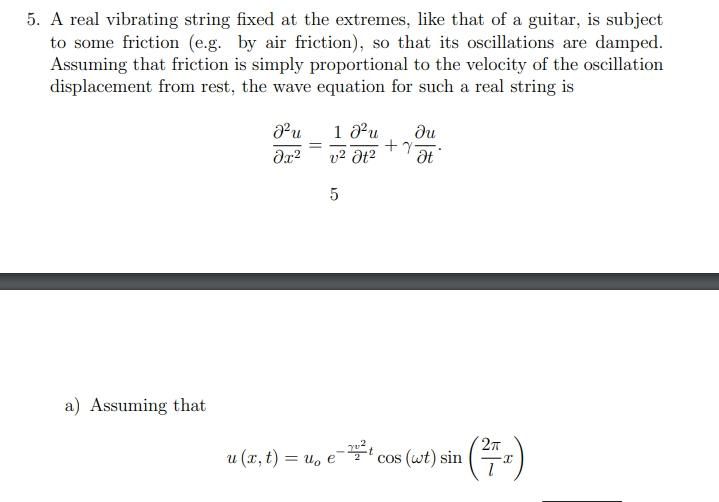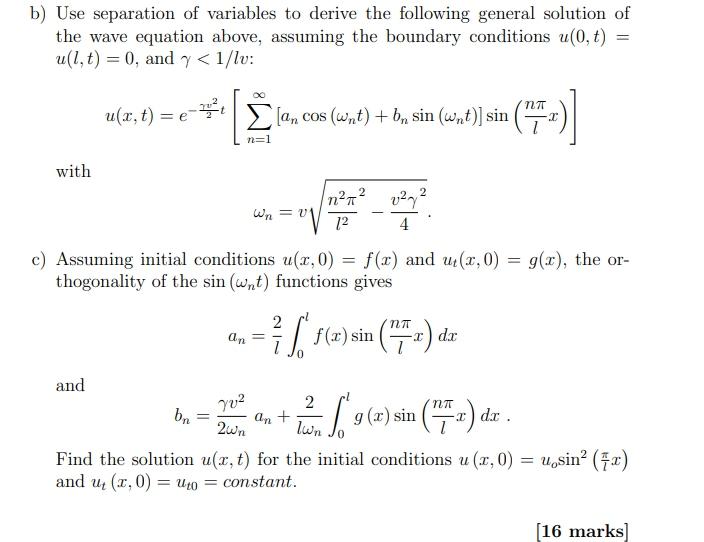Home /
Expert Answers /
Advanced Physics /
a-real-vibrating-string-fixed-at-the-extremes-like-that-of-a-guitar-is-subject-to-some-friction-e-pa132
(Solved): A real vibrating string fixed at the extremes, like that of a guitar, is subject to some friction (e ...
A real vibrating string fixed at the extremes, like that of a guitar, is subject to some friction (e.g. by air friction), so that its oscillations are damped. Assuming that friction is simply proportional to the velocity of the oscillation displacement from rest, the wave equation for such a real string is
5. A real vibrating string fixed at the extremes, like that of a guitar, is subject to some friction (e.g. by air friction), so that its oscillations are damped. Assuming that friction is simply proportional to the velocity of the oscillation displacement from rest, the wave equation for such a real string is J²u 18²u ?? +7 ?x² v² ?t² ?t 5 a) Assuming that u (x, t) = u, e = t cos (wt) sin 2? (²7?)
b) Use separation of variables to derive the following general solution of the wave equation above, assuming the boundary conditions u(0, t) u(l,t) = 0, and y <1/lv: = u(x, t) = elan cos (wnt) + bn sin (wnt)] sin sin (+) n=1 with n²?² 2 v²² - Wn = v1 12 4 c) Assuming initial conditions u(x,0) = f(x) and u(x,0) = g(x), the or- thogonality of the sin (wnt) functions gives 2 an = =76 f(x) sin ¹ (77x) d dx and bn - 22²0 +2²9 (2) sin (2) de = an g(x) . 2Wn Find the solution u(x, t) for the initial conditions u (x, 0) and u?(x, 0) =uto= constant. u,sin² (x) [16 marks]

